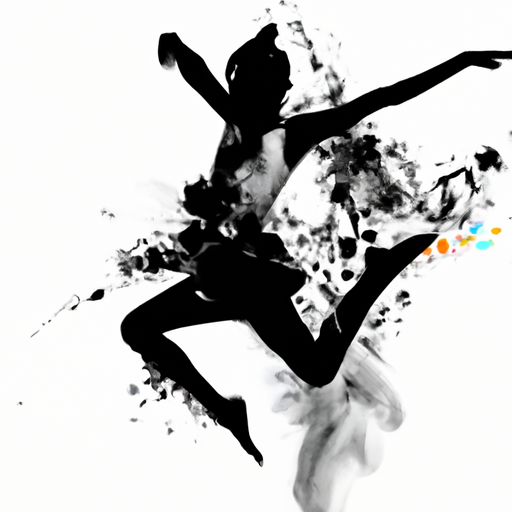In the world of fitness and wellness, there is a constant search for innovative and effective approaches to staying healthy. One such approach that has gained popularity in recent years is the dance-based diet. Combining the art of dance with fitness and nutrition, this unique approach offers a holistic way to achieve physical and mental well-being. In this article, we will delve into the various aspects of the dance-based diet, from diagnosing and treating dance-related health issues to exploring the symptoms and causes of dance-related injuries. By gaining insights from medical professionals and experts in the field, we will uncover the secrets behind this transformative fitness trend. Join us as we embark on a journey through the world of dance and discover the power it holds in enhancing our overall health and vitality.
1. "The Dance-Based Diet: A New Approach to Fitness and Wellness"
Dance has long been recognized as a form of artistic expression and a source of joy. However, in recent years, it has gained recognition as a unique and effective way to achieve fitness and wellness goals. The dance-based diet is a new approach that combines the benefits of dance with a structured eating plan to promote a healthy lifestyle.
The dance-based diet is not just about losing weight or achieving a certain body shape. It focuses on overall wellness, incorporating physical, mental, and emotional well-being. By integrating dance into a daily routine, individuals can experience a range of benefits, from improved cardiovascular health to increased flexibility and strength.
One of the key aspects of the dance-based diet is the emphasis on movement. Dance involves a variety of movements that engage different muscle groups, promoting a full-body workout. This helps to burn calories and build lean muscle mass, leading to weight loss and toning. Unlike traditional exercise routines, dance provides a dynamic and enjoyable way to stay active, making it easier to stick to a fitness regimen.
Another important element of the dance-based diet is the incorporation of a balanced and nutritious eating plan. Dance requires energy and stamina, so it is essential to fuel the body with the right nutrients. A well-rounded diet consisting of whole foods, lean proteins, fruits, vegetables, and whole grains provides the necessary nutrients to support dance performance and overall health. By following a dance-based diet, individuals can achieve weight loss goals while maintaining optimal energy levels.
In addition to physical benefits, the dance-based diet offers numerous mental and emotional advantages. Dancing has been found to reduce stress levels and improve mood by releasing endorphins, the body’s natural feel-good hormones. It also provides an outlet for self-expression and creativity, allowing individuals to channel their emotions through movement. This can be particularly beneficial for those struggling with anxiety, depression, or other mental health issues.
The dance-based diet is suitable for people of all ages and fitness levels. Whether you are a beginner or an experienced dancer, there are various dance styles and routines that can be tailored to individual preferences and abilities. From ballet to hip-hop, salsa to Zumba, there is a dance form for everyone.
In conclusion, the dance-based diet offers a holistic approach to achieving fitness and wellness goals. By incorporating dance into a daily routine and following a balanced eating plan, individuals can experience a range of physical, mental, and emotional benefits. It is a fun and enjoyable way to stay active, improve cardiovascular health, build strength and flexibility, and enhance overall well-being. So, put on your dancing shoes and embrace the dance-based diet for a healthier and happier lifestyle.
2. "Diagnosing and Treating Dance-Related Health Issues: Insights from Medical Professionals"
Diagnosing and Treating Dance-Related Health Issues: Insights from Medical Professionals
Dance is not only an art form but also a physically demanding activity that requires exceptional strength, flexibility, and endurance. As dancers push their bodies to the limits, they are prone to various health issues that may arise due to the intense physical strain. To shed light on the diagnosis and treatment of dance-related health problems, we turn to the valuable insights provided by medical professionals who specialize in treating dancers.
When it comes to diagnosing dance-related health issues, medical professionals employ a comprehensive approach that takes into account the dancer’s medical history, physical examination, and diagnostic tests. Understanding the symptoms and causes of dance-related injuries is crucial in determining the appropriate course of treatment.
The symptoms of dance-related health issues can vary greatly depending on the specific injury or condition. Common symptoms include pain, swelling, reduced range of motion, muscle weakness, fatigue, and even depression or anxiety related to the inability to perform. It is essential for dancers to listen to their bodies and seek medical attention if they experience persistent or severe symptoms.
Medical professionals emphasize the importance of early intervention and proper diagnosis. Prompt identification of dance-related injuries can prevent further damage and expedite the recovery process. Medical practitioners specializing in dance medicine are well-versed in recognizing the unique challenges faced by dancers and can provide a tailored diagnosis that addresses the specific needs of the individual.
Once a diagnosis is established, medical professionals employ a multifaceted approach to treat dance-related health issues. Treatment plans often include a combination of rest, physical therapy, pain management, and sometimes surgical intervention. The goal is not only to alleviate symptoms but also to promote healing and prevent future injuries.
Physical therapy plays a significant role in the treatment of dance-related health issues. It focuses on strengthening the affected muscles, improving flexibility, and enhancing overall biomechanical alignment. Additionally, physical therapists work closely with dancers to develop targeted exercise programs and provide guidance on injury prevention techniques.
Pain management is another crucial aspect of treating dance-related health issues. Medical professionals may prescribe pain medications or recommend alternative methods such as acupuncture, massage therapy, or chiropractic care. It is essential to address the pain adequately to ensure dancers can resume their training and performances safely.
In some cases, surgical intervention may be necessary to correct severe dance-related injuries. Medical professionals who specialize in dance medicine work closely with orthopedic surgeons to determine if surgery is the most appropriate course of action. Surgery is typically considered when conservative treatments fail or when the injury significantly impairs the dancer’s ability to perform.
Dancers should also actively participate in their own recovery process by following prescribed treatment plans, maintaining a healthy lifestyle, and incorporating cross-training exercises to improve overall strength
3. "Exploring the Symptoms and Causes of Dance-Related Injuries: Prevention and Rehabilitation Strategies"
Dance is a beautiful art form that requires immense physical strength, flexibility, and stamina. However, dancers are often prone to injuries due to the repetitive movements, intense training, and demanding physical requirements of their craft. Understanding the symptoms and causes of dance-related injuries is crucial in order to prevent and rehabilitate these conditions effectively.
One of the most common symptoms experienced by dancers is pain, which can range from mild discomfort to severe agony. This pain may be localized in specific areas such as the ankles, knees, hips, or spine, or it may be more generalized throughout the body. Additionally, dancers may experience swelling, tenderness, stiffness, or limited range of motion in the affected areas. These symptoms can significantly impact a dancer’s ability to perform and may require immediate attention to prevent further damage.
There are several factors that contribute to dance-related injuries. Poor technique and improper body alignment are major culprits, as they place excessive strain on muscles, joints, and ligaments. Overuse is another common cause, as dancers often push their bodies beyond their limits in pursuit of perfection. Inadequate rest and recovery time can also lead to injuries, as fatigue increases the risk of accidents and decreases the body’s ability to heal itself. Additionally, external factors such as improper dance flooring, ill-fitting shoes, or inadequate warm-up and stretching routines can contribute to injury risk.
Prevention strategies are essential in minimizing the occurrence of dance-related injuries. Firstly, dancers should prioritize proper technique and alignment, ensuring that they receive regular training and guidance from qualified instructors. It is important to listen to one’s body and recognize the signs of fatigue or pain, taking breaks as needed and avoiding overexertion. Implementing a well-rounded conditioning program that focuses on strength, flexibility, and endurance can also help prevent injuries by preparing the body for the physical demands of dance. Adequate warm-up and stretching routines before each practice or performance are crucial in priming the muscles and reducing the risk of strains or sprains.
In the unfortunate event that a dancer sustains an injury, rehabilitation strategies become paramount in facilitating a speedy and effective recovery. Seeking professional medical advice is crucial to accurately diagnose the injury and establish an appropriate treatment plan. This may involve a combination of rest, physical therapy, and targeted exercises to strengthen and rehabilitate the affected areas. It is important for dancers to follow their healthcare provider’s instructions diligently and not rush the healing process, as premature return to dance can lead to further injuries or complications.
In conclusion, understanding the symptoms and causes of dance-related injuries is vital for dancers, instructors, and healthcare professionals alike. By implementing effective prevention strategies and promptly addressing injuries with appropriate rehabilitation techniques, dancers can maintain their physical well-being

